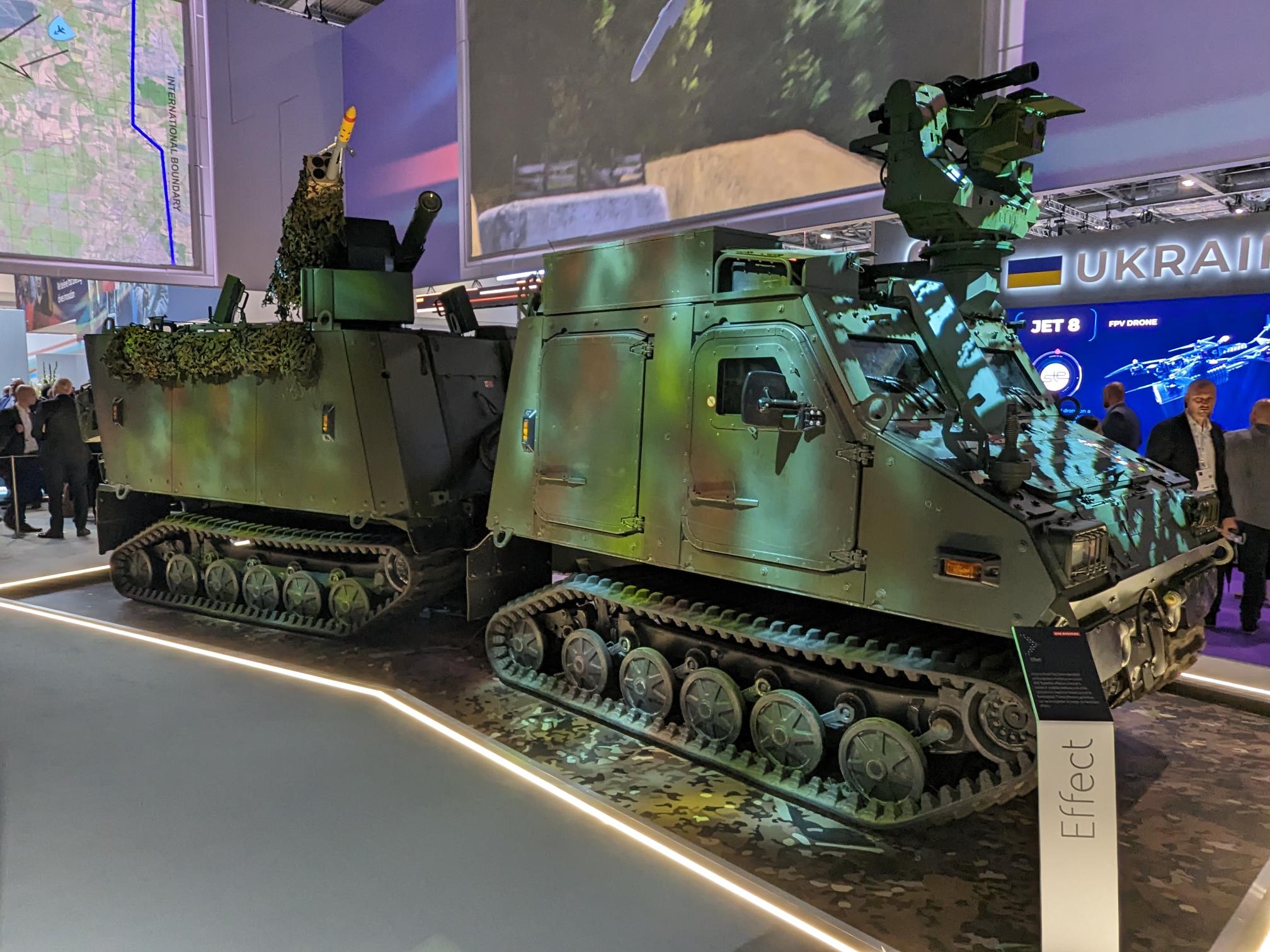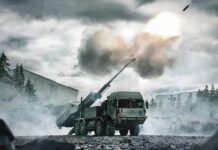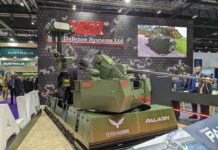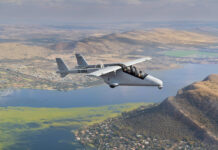At the DSEI exhibition in London on 13 September 2023 BAE Systems outlined a new concept for fighting in the High North and Indo-Pacific based on mechanised formations using substantially weaponised versions of BAE Systems Hägglunds’ BvS10 armoured articulated all-terrain tracked carrier.
The BvS10, under this concept, would thus go beyond simply being an armoured personnel carrier (APC) or a logistics vehicle into a fully fledged armoured fighting vehicle.
Darren Restarick, regional director for BAE Systems Hägglunds, pointed out that the difficult terrain of the High North and the Indo-Pacific region are key areas where Western forces are looking to project defence capability in 21st Century conflict scenarios. For this reason, he said, the BvS10 will become more prominent “because of the unique terrain in which you’re having to manoeuvre in order to do your job”.
“Conflicts have shown that possessing a vehicle that is able to negotiate all of these complex terrains of the High North and the Indo-Pacific, as well as other areas in the world, is decisive in both the operational and tactical fighting in gaining and sustaining an advantage,” said Restarick. “We see that there is a change and a need for this capability, but exploring it beyond the armoured personnel carrier. BvS10 enhances battlefield manoeuvre utilising the unparallelled potential of hypermobility, modularity and signature avoidance.”

Restarick asserted that the BvS10 has the greatest potential tactical mobility of any NATO vehicle in service”, noting that by NATO definitions of terrain traversability the BvS10 can negotiate 80% of terrain worldwide.
“We have the capability of theatre entry; we have expeditionary warfare capability; we can project forward without support; we’re able to swim,” he noted of the BvS10. “If we look at trench-crossing capability, this small vehicle can cross trenches of 2 m – and that’s comparable to 8×8s and IFVs, both of which are designed to work with tanks. So when we look at extending the capability from an armoured personnel carrier, we can now start to see that, within the capability matrix, this can still keep up with tanks.”
The low ground pressure of the BvS10, Restarick added, also means it is capable of traversing terrain such as floating bogs that other AFVs simply cannot negotiate, while its width, which is less than that of most AFVs, means the BvS10 can access and manoeuvre within woodlands.
Restarick additionally noted that the BvS10’s relatively small size means that a single vehicle is air-transportable in a C-130 transport aircraft, while two can be carried by an A400M and four by a C-17.
While Restarick conceded that the BvS10’s armour protection is only to NATO Stanag Level 2, he pointed out that its hypermobility effectively “exponentially increases” its survivability, given that it can manoeuvre in areas an enemy would not expect to cover and, in doing so, potentially “over-extend an enemy’s ISTAR matrix”.
Turning to the example of a modular fighting vehicle BvS10 variant that BAE Systems has displayed on its stand at DSEI 2023, Restarick that its rear car features a Moog Flexible Mission Platform, Advanced Precision Kill Weapon System (APKWS) guided rockets, an RBS 70 short-range surface-to-air missile launcher and a 360° hemispheric radar, while the front car mounts a remote weapon station armed with a 7.72 mm Dillon Aero Minigun.
He pointed out, however, that the vehicle is agnostic in terms of weapons fit. “You can have whatever you want on there. This is just more about demonstrating a capability,” he said, adding that “the main takeaway for me here is that BvS10 can be configured to address almost any threat in the modern operating environment”.
Given that BAE Systems is effectively selling the idea of a new mechanised formation, as opposed to simply a new BvS10 variant, ESD asked Restarick whether the company would initially focus its marketing efforts on the Nordic NATO nations that already use and are thus familiar with the operational capabilities of such vehicles.
“Yes, the High North is definitely an area where we’re focusing,” he replied. “It is a much easier sell to people that have been using Bv206 or also BvS10 to replace those.
“Yes, it is a huge task to get that thought process out there to understand and then change, but we also have to remember that they have a new challenge. Their current capabilities cannot manoeuvre to the extent that they would like them to manoeuvre in the High North, so what we’re saying is that, if we can get there early enough to [get to] the people are doing this analysis and say ‘This is real; this is how a capability can be substantially supported by Bvs10’ – especially within the reconnaissance and infantry brigades – then I think that we’re in the right stage in order to give the right points into those questions.
“It’s about informing the people that are making that analysis,” Restarick said. “Now, we see a lot of changes around; you know, what’s going to happen with the M113 [tracked armoured personnel carrier] in the future? What are they going to replace it with? For me, this is the answer.”
Peter Felstead













